Hi Guys. Here is an update on my progress with riveting the Shiden Kai. Not exactly a "riveting" update (ha ha) since I have not made such dramatic progress. Still, I have largely completed the port side of the fuselage, and it has actually been quite interesting, including successfully "erasing" mistakes along the way. I am using the rivet diagram I found online, checked against real rivets of museum birds.
The real a/c make it clear that lines of rivets on warbirds are often not as perfectly straight and even as diagrams show, so I am not pulling my hair out when the teeth of the riveter go off a bit. At the same time, I have been using super glue and accelerator applied by toothpick to fill a few lines that got quite far off. After sanding down the hardened glue "filler" with 600 and 1500 grit sandpaper, the plastic surface is restored, smooth and unblemished, and ready for a second try. I have included a few pics to show the overall results. Here is one to start with
But back to the preliminaries to show this step by step. I first penciled in the lines to mark rivet patterns directly on the model.
I used a fine set of calipers from my Grandfather's tool set (he was a commercial artist) to check the spacing between lines. I also made a simple flexible straight edge from paper to layout the pattern on the complex curves of the fuselage.
-
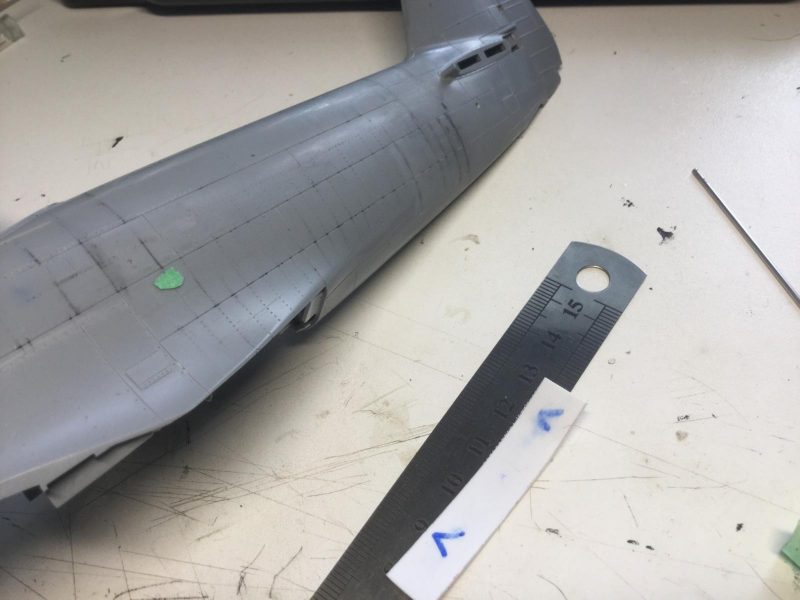
I use three kinds of rulers for guiding the riveting tool: 1. Dymo Tape, which sticks to the plastic surface well but sometimes doesn't guide the riveting tool firmly enough (being a bit too thin and flexible). 2. a thin steel straight edge, which is only good for flatter areas (not flexible enough) and 3. a piece of thick styrene, which has been the best guide so far for the cutting wheel end of the riveter but which also can get a bit chewed up after awhile from the teeth. The trickiest task is riveting along inscribed panel lines since the riveter has to get close to the edge without slipping into the rut. The lines I have filled so far have mostly been from getting too far away from the panel line or slipping out of alignment with it. To my surprise, the easiest lines have been the closely spaced strips aft of the wing root.
-
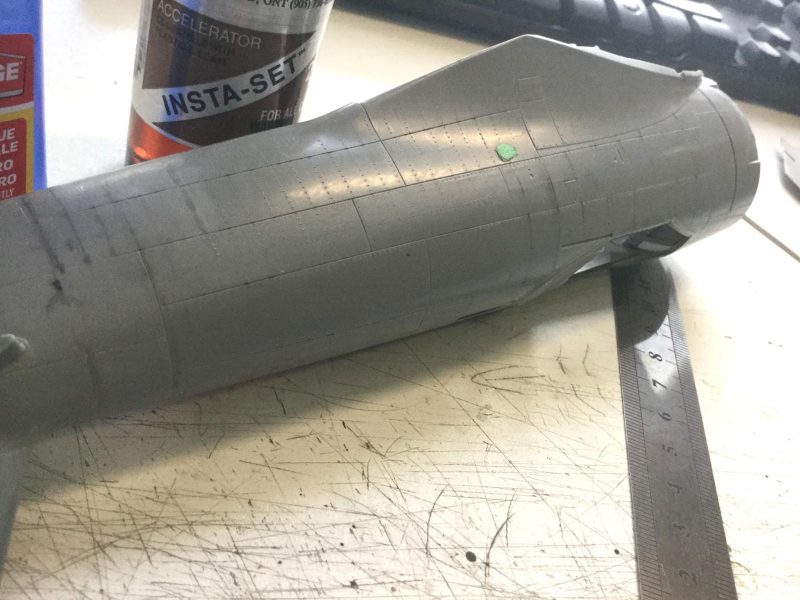
-
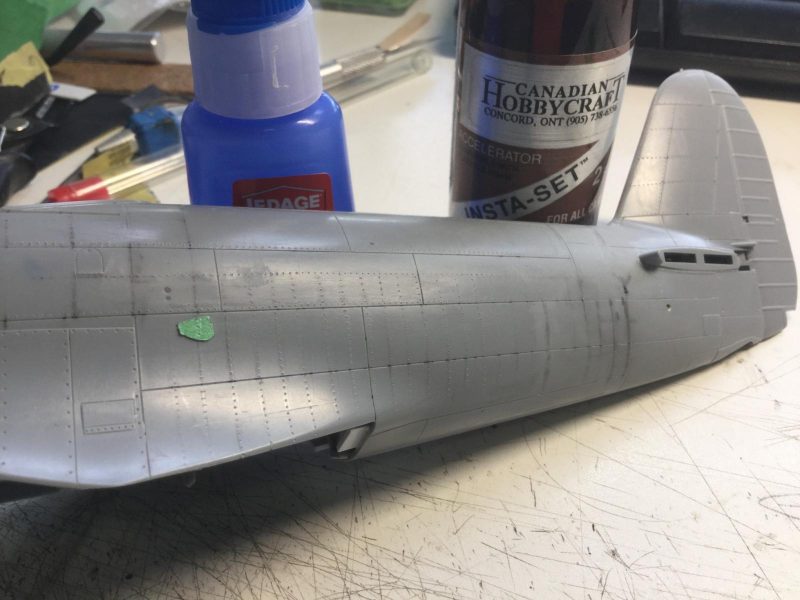
-
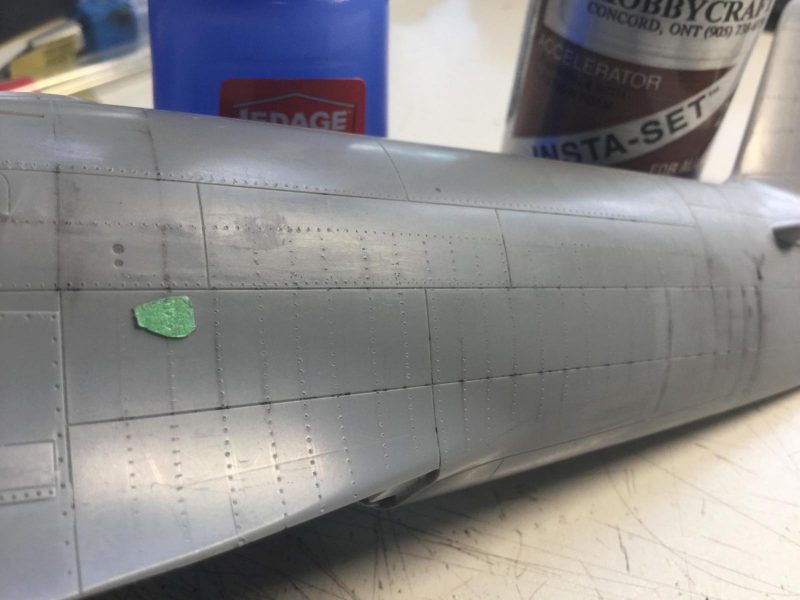
-
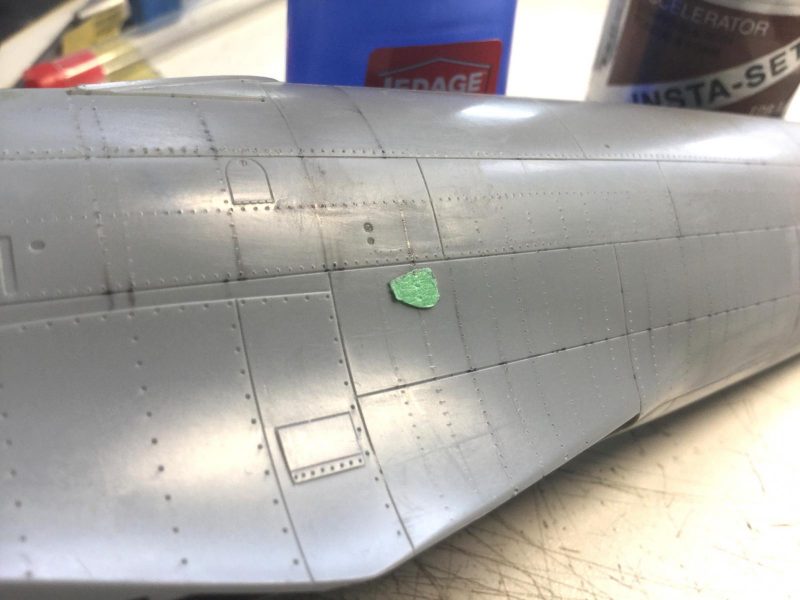
I did these quite rapidly with my styrene rule, once they were clearly penciled in. The trick is holding the ruler guide in place while rolling the riveter along it. You have to put a lot of pressure on the ruler so it doesn't slip. This must resist the firm pressure you need to push the cutting wheel into the hard Hasegawa plastic. I use strips of masking tape to protect the panel areas that I do not want riveted at the ends of lines.
I also use masking tape to stabilize the ends of the straight edge, even when I am holding it down with my thumb.
The pictures are very approximate as I don't have enough hands to hold the tools and take a pic with my iPad at the same time. It is important to rivet along a panel line so that you can see the line as you go and not get too far from it or slip into it. . Doing complex curves like the vertical stabilizer require you to keep lines straight while following the bend to the sharper leading edge. this goes pretty quickly, though.
Meanwhile, rivet lines between and far from inscribed panel lines must be carefully spaced to look right.
Measure twice , cut once. Fill with glue, sand smooth and start again, if necessary. Once again, having penciled lines to follow really helps even if you have to keep redrawing them as you go. I don't like using marker because it is less fixable if you slip and it is harder to see your progress with the tool inside a dark line.
So, that sums up my riveting adventures so far. I must say that the superglue repair work I have been able to do so far has really helped my courage in getting on with things. I actually abandoned my initial ham-fisted efforts at riveting the Shiden Kai for a couple of days before I re-learned how to do this (I used the method before on my FW-190, but I that was about 10 years ago). Funny how learning curves have to repeat themselves periodically in this hobby. Anyway, I didn't mean to write so much. I hope this update is of some help to potential riveters (or should that be "riveteers" to distinguish a crazy hobbyist idea from an actually useful job? - Rosie the Riveter would I am sure be as baffled as my wife why I do this).